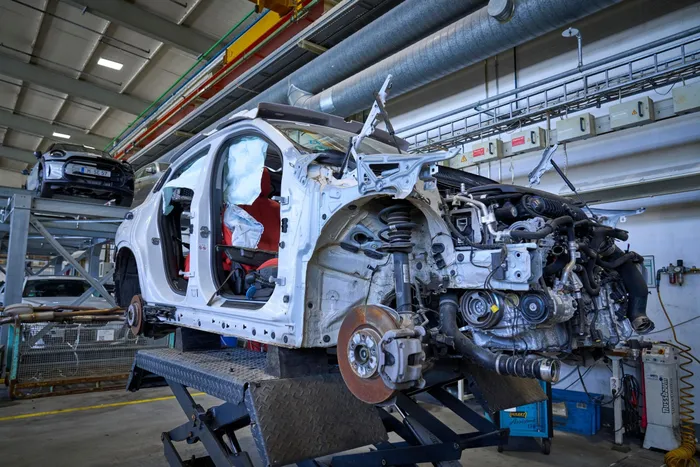Manufacturing sector still under pressure despite output rising marginally in September
MANUFACTURING

Manufacturing production increased by 0.3% in September 2025 compared with September 2024.
Image: File Supplied
South Africa’s manufacturing production rose slightly by 0.3% year-on-year in September, reflecting modest growth in an otherwise strained industrial landscape.
According to data from Statistics South Africa (Stats SA) on Tuesday, this marked the first month of industrial growth, albeit very mild, following two consecutive months of decline.
Stats SA said the motor vehicles, parts and accessories, and other transport equipment division recorded a 7.6% increase while the food and beverages division also expanded by 1.8%.
StatsSA’s director of industry statistics, Nicolai Claassen, said five of the 10 manufacturing divisions reported positive growth rates over this period compared to the same period last year.
However, on a month-on-month seasonally adjusted basis, which is critical for calculating quarterly GDP growth, Classen said manufacturing output declined by 0.5% in September, following increases of 0.7% in August and a 0.9% contraction in July.
Overall, seasonally adjusted production in the third quarter of 2025 edged up 0.1% compared with the previous quarter, with only four of the 10 manufacturing divisions showing positive growth.
Professor Waldo Krugell, an economist at North-West University, said the data aligns with the temporary improvement seen in the Absa Purchasing Managers’ Index (PMI) for September.
“It's a small bit of good news, but I am not sure it will be sustained. The PMI was down again in October with manufacturers citing weak domestic demand and international uncertainty.”
Krugell added that everything points to the sector being under immense pressure from the slow growth here, as well as from significant Chinese competition.
FNB senior economist, Thanda Sithole, echoed these sentiments, saying manufacturing output has declined by 1.5% year-to-date (January to September) compared with the same period last year, following a 0.4% decline in 2024.
Sithole said this reflects continued weak domestic and external demand, as well as uncertainty weighing on confidence.
"The index tracking expected business conditions also fell sharply to 46.1 from an already depressed level of 49.2, suggesting that surveyed manufacturers have become even more pessimistic about the near-term operating environment," Sithole said.
"Activity is likely to remain subdued in the short term until demand picks up, and structural constraints are sufficiently addressed. In addition, United States tariffs, for which South Africa has yet to secure a resolution, remain a key concern for export competitiveness."
However, Chifipa Mhango, chief economist at Don Consultancy Group (DCG), described the 0.3% year-on-year rebound as a sign of resilience.
“South Africa’s manufacturing sector showing a modest 0.3% year-on-year rebound in September 2025 is a welcome sign of resilience amid a difficult industrial climate.”
Mhango pointed to positive developments within the clothing, leather, textile and footwear (CLTF) sector, which posted 3.4% growth in production during September, up from 2.3% in August.
However, he noted that the leather and footwear segments declined by 4.8% and 3%, respectively.
“The leather and leather products and footwear segments in the CLTF sector were the only segments that registered declines of 4.8% and 3% respectively; while sales growth dropped from 8.7% to 8.2% in the same period to reach R7 billion in September 2025 from R7.1bn in August 2025, in current terms,” he said.
“Rising production costs, coupled with high energy tariffs and expensive transport and raw materials are steadily eroding the sector’s competitiveness. At the same time, the market is flooded with cheap imports—often under-invoiced or smuggled—which have severely undermined local production capacity. Reviving South Africa’s clothing, leather, textile and footwear sector will require a bold and coordinated policy response.”
BUSINESS REPORT